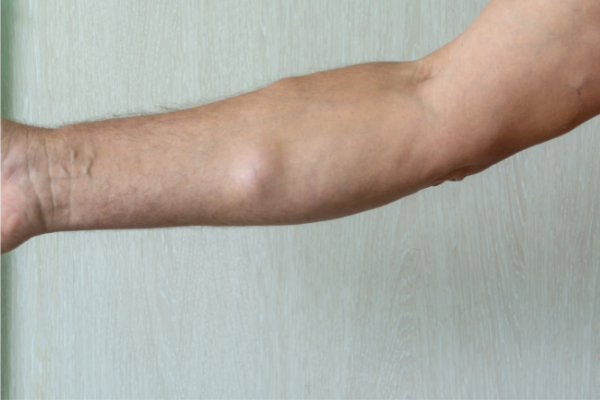A lipoma is made up of lumps of fatty tissue. It grows slowly under your skin. It is benign (non-cancerous) and is usually harmless.

Image credit: Canva


A lipoma is made up of lumps of fatty tissue. It grows slowly under your skin. It is benign (non-cancerous) and is usually harmless.

Image credit: Canva
It's not clear why people get lipoma. People with a family history of lipomas tend to get them and some people have many lipomas. This is called familial lipomatosis. Sometimes, prior injury to that part of your body can trigger the growth of a lipoma.
Lipomas can occur in people of all ages and affect both men and women equally.
Some health conditions can make you more likely to get lipomas. These include:
Common symptoms of a lipoma include a small lump or swelling that:
Lipomas can grow anywhere there is fat tissue on your body, but are most commonly seen on your shoulders, neck, trunk and arms.
Rarely, a lipoma may grow large enough to put pressure on nearby structures. This can cause problems, such as pain if it presses on a nerve.
|
See your healthcare provider if you have any of the following symptoms: |
|
Your healthcare provider will usually diagnose a lipoma by examining the skin lump or swelling. Normally no tests are needed. However, sometimes an ultrasound scan, CT scan or MRI scan may be needed to confirm your lipoma. In rare cases, a biopsy is done. This is when the lump is taken and sent to a laboratory to be examined.
You may find it useful to look at the DermDiag app.
A lipoma is usually not treated. Occasionally, people wish to have one removed because it is unsightly or it puts pressure on nearby structures and causes problems. In this case, your lipoma may require removal by surgery or, in some cases, the fat cells are sucked out by a needle (liposuction). This is usually done under a local anaesthetic.
Talk to your healthcare provider to find out if your lipoma needs removal. Some GPs will do the surgery for you. In other cases, they will refer you to a specialist.
Lipoma(external link) HealthInfo Canterbury, NZ
Lipoma and liposarcoma(external link) DermNet, NZ
Lipoma(external link) Patient Info, UK
Lipoma(external link) NHS, UK
Soft tissue lumps(external link) Canterbury Initiative Education Session, NZ, 2015
Sonography of musculoskeletal soft tissue masses – techniques, pearls, and pitfalls(external link) American Journal of Roentgenology, US, 2014
Improving outcomes for people with sarcoma(external link) National Institute for Health and Care Excellence (NICE), UK, 2006
Credits: Healthify editorial team. Healthify is brought to you by Health Navigator Charitable Trust.
Reviewed by: Dr Bryan Frost, FRNZCGP, Morrinsville
Last reviewed:
Page last updated: